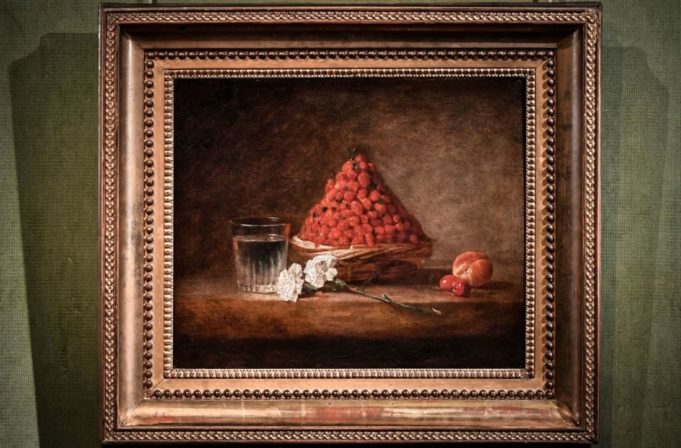An international fight is brewing between our own Kimbell Art Museum and the world’s most famous art repository over Jean-Baptiste-Siméon Chardin’s “Basket of Wild Strawberries.” The Kimbell ponied up $26.8 million for the oil painting at an auction in March, only for the French government to declare the work a national treasure, a move that gives the Louvre Museum 30 months to purchase the still life itself. Now, the art world waits to see whether the painting will be displayed in Paris or in Fort Worth.
Chardin was a cabinetmaker’s son who spent his entire life in Paris in the 18th century. At a time when French painting was defined by the ultra-refined aristocratic scenes of Watteau and Fragonard (what was called “the grand manner” at the time), Chardin was renowned for his still lifes and scenes from the ordinary lives of housewives, kitchen maids, and children. A largely self-taught artist, he worked painstakingly, producing relatively few canvases of rough-hewn but exquisite craftsmanship. In his 20s, he gained admission into France’s Royal Academy, an extraordinary honor for someone from his background.
His “Le panier de fraises des bois” measures about 15 by 17 inches. The painting was shown at the Salon exhibition in 1761 (scholars assume it was painted around that time), where it received relatively little attention. It disappeared from history before resurfacing in the early 19th century, when it was bought by François Marcille, the wealthy and enthusiastic art collector who came to own more than 30 Chardins.
The painting passed through the hands of his descendants, steadily gaining a reputation for its rigorous and eye-catching composition, with the pyramid of strawberries at the center set off by the glass of water on the left and the peach and cherries on the right. Chardin executed many still lifes of fruit, but this is his only painting that takes strawberries as its main subject. Frequently chosen as the image for covers of books about Chardin, the painting came up for auction this past spring at Paris’ Artcurial. A piece of art that was expected to go for $16 million became the subject of a bidding war among a small number of anonymous buyers, driving up the price. The winner of that auction was New York art dealer Adam Williams, and on May 4, he was revealed to be acting on the Kimbell’s behalf.
The French government has long been a jealous guardian of the country’s artistic heritage, setting strict limits on French paintings leaving the nation’s borders for any reason. Its response means that it will be a while before the general public can see this masterwork. French taxpayers have had to make up for a steep shortfall in the Louvre’s attendance caused by the COVID pandemic, and the museum does not currently have the funds to buy the painting. Its corporate sponsor TotalEnergies may stump up the cash, though skeptics in France and elsewhere are questioning why the money would be spent for a museum that already has more than 40 Chardin canvases or why an oil company is involved with an art museum in the first place. Kimbell director Eric Lee seemed sanguine about the prospects of obtaining the painting, telling The Art Newspaper France, “Even if we consider the Louvre may finally obtain it, it’s win-win in every sense as a major museum will acquire the work.”
When I reached the museum for comment, they replied, “We respect the French government’s decision. … Nevertheless, we hope eventually to be able to display this marvelous painting at the Kimbell, where it would be a wonderful ambassador of French culture.”
Prepare for a high-level art dispute over the next couple of years that our city will eye with great interest.












